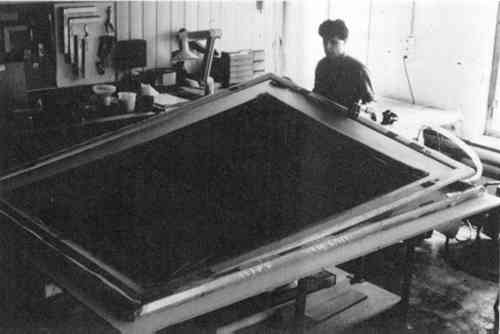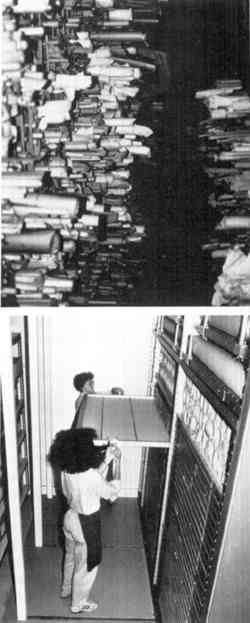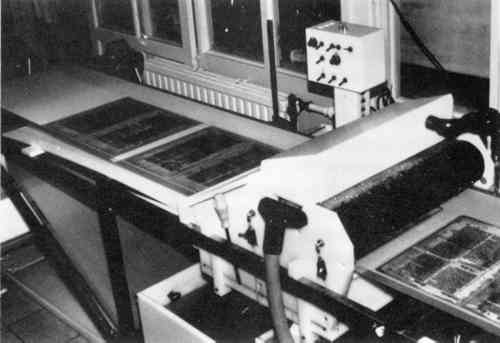OBSERVATIONS ON DEVELOPMENTS IN THE TREATMENT OF WORKS ON PAPERT. K. McCLINTOCK
8 LARGE-SCALE AND MASS TREATMENTSThe conservation of large individual objects and large groups of objects has received great attention in an attempt to expand the criteria of judgment about what constitutes good and appropriate treatment. In the case of large objects, stumbling blocks have characteristically been overall bathing in water or solvents, flattening, and mounting to systematically address storage, display, and transport. The cost of devoting the same attention to procedures such as stain reduction, filling, and inpainting on a large scale to what would be given to a smaller-sized work has also necessitated compromises. Happily, managers of specialty collections are fostering great appreciation for objects that are characteristically created on a large scale, such as contemporary works, architectural drawings, cartographic records, and historic wallpapers. Funds are being made available to undertake projects with a level of craftsmanship that only time and materials can make possible. Trays and handling systems made of modular stretchers wrapped with polyethylene or permeable screening (fig. 4), large format sinks, and suction tables up to 4 � 6 ft alleviate some of the
In considering the treatment of large groups of objects, it was noted in the discussion of limiting treatment how tailored housing may mitigate or postpone more than basic processing. While limited resources dictate that objects in a large group may receive a single opportunity for treatment, they are nonetheless handled and judged individually, however fleetingly. Humidification in batches to relax planar distortion, flattening between felts or blotters in stacks under weights, surface cleaning, and minimal mending already summarizes an enormous volume of work (fig. 5). To introduce washing is to raise the cost of treatment substantially because of the time necessary to evaluate solubilities by testing and the time and space necessary to process, sort, dry, and flatten. It is interesting to reflect on earlier approaches, such as lamination, to which efforts are now being devoted to reversing. Even promising developments in group treatment—such as mass deacidification, paper strengthening through graft copolymerization, or the introduction of synthetic polymers—are therefore still viewed with caution.
In contrast, reinforcement by splitting weakened sheets and relaminating them with interleaves of Japanese-type paper is a widespread process in Germany. Continuous large-scale batch treatment can be quasi-mechanized, as groups of objects are assembled in rolls, washed and alkalized together, and unrolled for drying. Continuous leaf casting in a seamless stream has been developed in Denmark (fig. 6). Efforts such as these are felt to meet individual institutions' problems of collection condition and size. These treatment methods may be alternatives or supplements to photo-duplication, whereby preservation of the original object is promoted because a reproduction receives the routine consultation.
In the United States the development of leafcasters and associated software with more finesse and nearly the same pace of production has occurred. Nonaqueous soft-spray deacidification systems also make possible more uniform and rapid processing of sheets by minimizing overspray. Educational programs through the Library of Congress, the National Archives, the Society of American Archivists, assorted regional centers, and libraries have promoted the development of technician-level in-house programs for treatment. At the graduate level, programs at Columbia University, Winterthur/University of Delaware, and State University College at Buffalo have given or plan to give focused and deserved attention to the treatment of archives. For the moment, limited resources and the desire to avoid overtreatment at the expense of general preservation have prevented a scale of automation and extent of processing comparable to that found in Europe to be exercised as the primary treatment focus in North America. |


